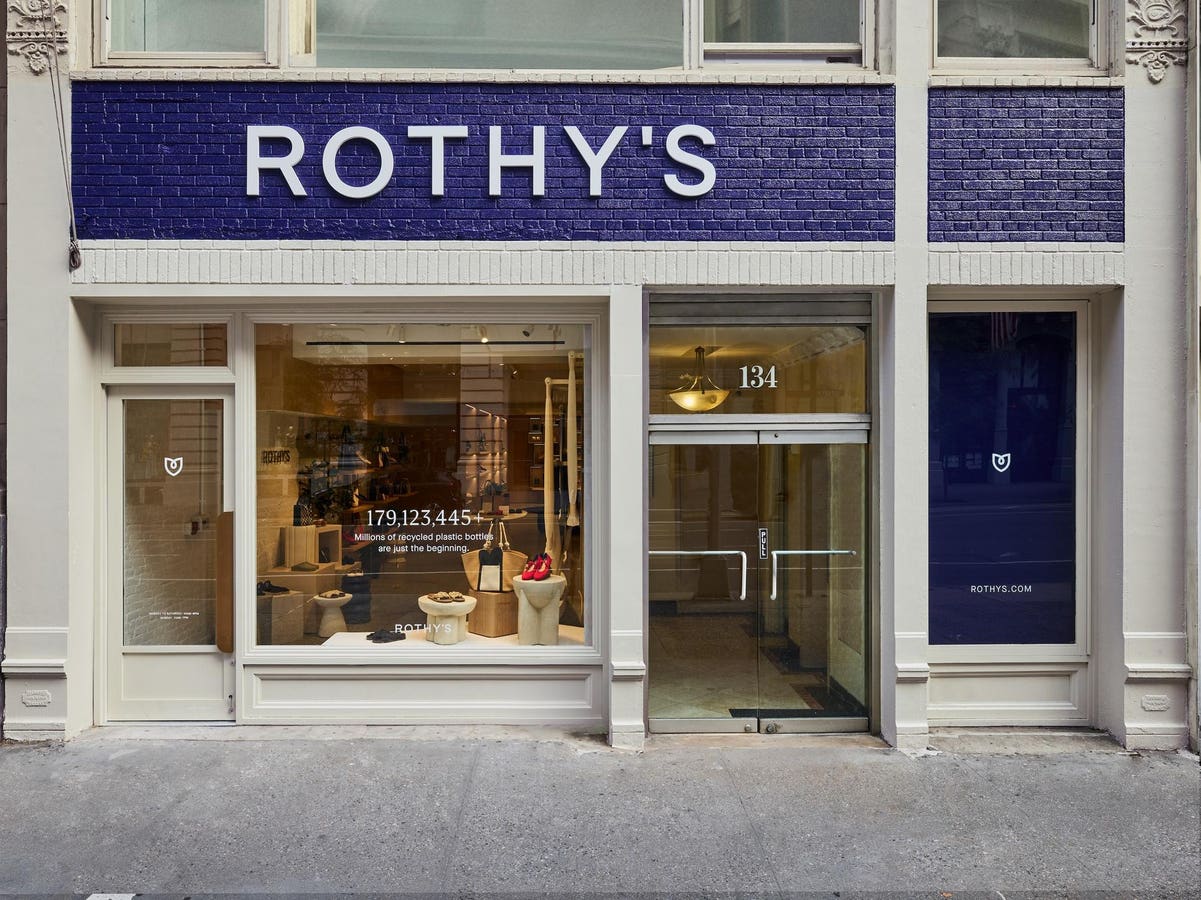Rothy’s began its journey as a digitally native brand, making waves in the fashion industry with its commitment to sustainability and innovative use of recycled materials. Founded in 2016, the brand quickly gained a loyal following for its comfortable, stylish footwear made from repurposed plastic bottles. Despite its initial success online, Rothy’s recognized early on that a physical retail presence would be essential to its long-term growth strategy.
“We knew from the beginning brick and mortar would be important to our brand,” said Dayna Quanbeck, President of Rothy’s. “We opened our first store, Fillmore, in 2019 and saw an amazing response from the community. Despite being a small store, it was incredibly successful, and we knew we had something there.”
Rothy’s entry into brick-and-mortar retail came when many other retailers scaled back their physical presence. However, Rothy’s took a different approach, leveraging its deep understanding of customer data to strategically decide where and when to open new stores. This data-driven approach allowed the brand to expand thoughtfully, ensuring each new location was primed for success.
“We’ve always been a data-driven business. Being digitally native, we have the ability to use our data in a different way,” Quanbeck explained. “We have spent a lot of time just really understanding our customers, how they shop, where they shop, where they live, and we started to test it in 2020.”
The 5th Avenue Flagship
Last month, Rothy’s unveiled its latest retail achievement: a flagship store on Fifth Ave in New York City’s Flatiron District. This store, the brand’s 23rd in the United States, marks the sixth location Rothy’s has opened in just three months—a clear indication of the brand’s accelerating growth.
However, the location is more than just another store; it’s a bold statement of Rothy’s commitment to sustainability and innovation. The store features New York City’s first-ever streetside water refill station, a unique addition that underscores the brand’s mission to reduce single-use plastics.
“We installed a refillable water station at the front of our store, and it was so much fun to see the excitement. We partnered with Hydroflask and invited consumers to swap a plastic bottle for a Hydro Flask,” stated Quanbeck. The City of New York estimates residents dispose of more than 700 million plastic water bottles each year, and only 45% of those put into recycling are captured in the recycling process. Before Rothy’s store, the city had water fountains in parks but no publicly accessible streetside water refill stations.
The store is designed to reflect Rothy’s brand ethos—innovation and sustainability at every turn. The store offers ample space for customers to explore Rothy’s expanding product range, including accessories and men’s footwear. The design also incorporates two art installations made from sustainable materials in collaboration with Caralarga, celebrating the milestone of repurposing 179 million water bottles.
“The design of this store is open yet comfortable. You’ll see us push the design a little bit forward from our first vintage, where we were just getting started; it’s warmer, and there’s room for more discovery. It will allow us to do more special collaborations,” shared Quanbeck.
Rothy’s Expansion Plans
With 23 stores already open and three more planned by the end of 2024, Rothy’s is showing no signs of slowing down. The brand has ambitious plans for the future in the United States and internationally.
“In the U.S., we see the potential for 50 to 75 stores in the near term,” Quanbeck revealed. “We’re focused on key markets where we know our customer base is strong, but we’re also actively looking at opportunities for global expansion. Our customers are global. She’s running to a board meeting in Munich, chasing kids around in Rio, and going out to drinks with her friends in Sydney. She’s the same customer in different parts of the world.”
Similar brands are also making efforts to expand both nationally and internationally. Competitors like Vivaia have begun opening stores in the U.S. Other digitally native shoe brands like Kizik have been opening stores extensively since the pandemic; Kizik now has three stores across the U.S. with more plans. One of the unique benefits of stores for shoe retailers is the ability for customers to find their fit, which can reduce return rates.
Looking ahead, Rothy’s plans to continue pushing the envelope with its retail concepts. The Fifth Ave flagship will serve as a testing ground for activations and experiential retail components, with special events and collaborations planned for the future. While the immediate focus remains on the U.S. market, Rothy’s is already laying the groundwork for international growth with an approach to expansion as thoughtful and data-driven as its approach to sustainability.
Read the full article here





